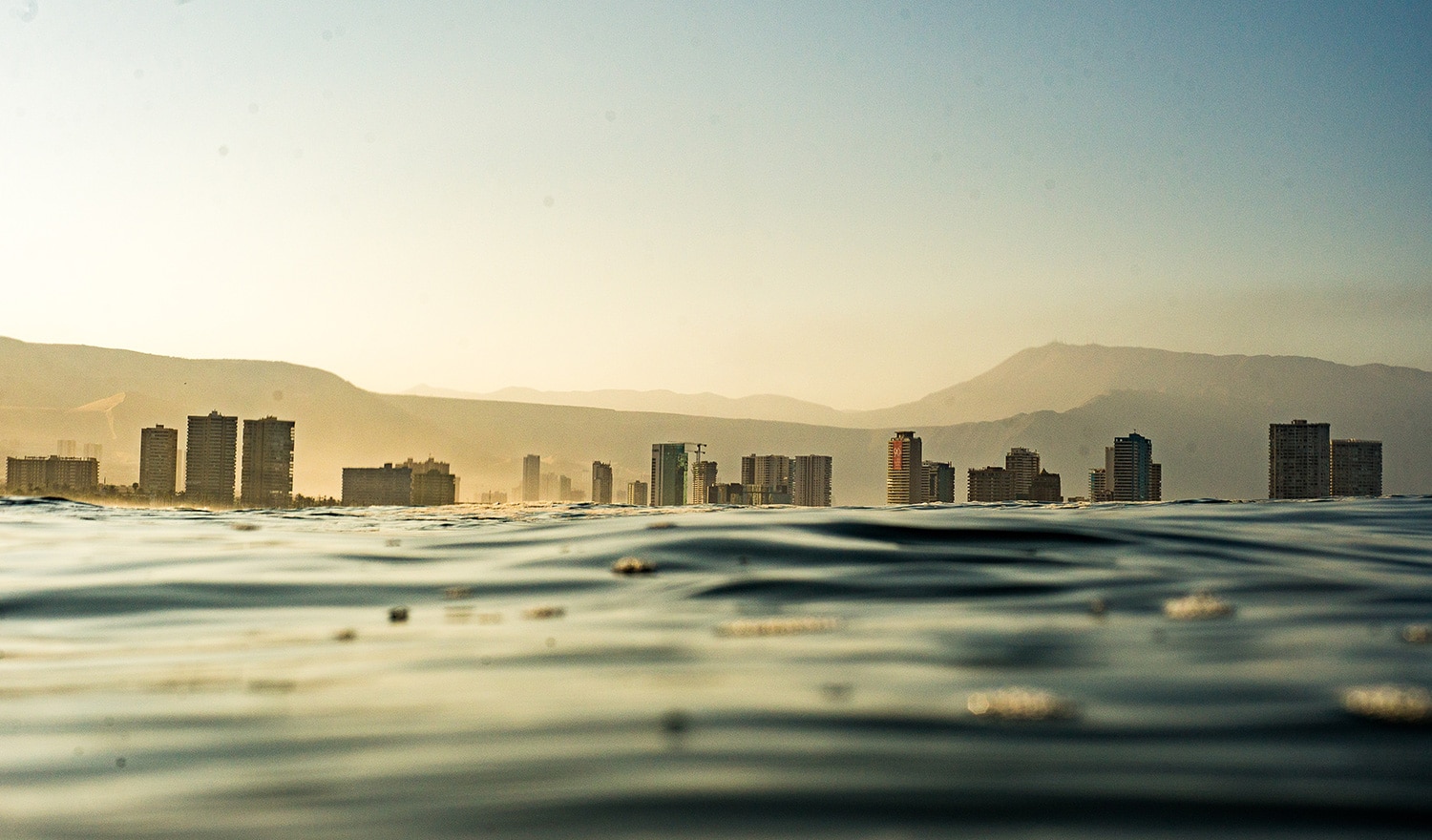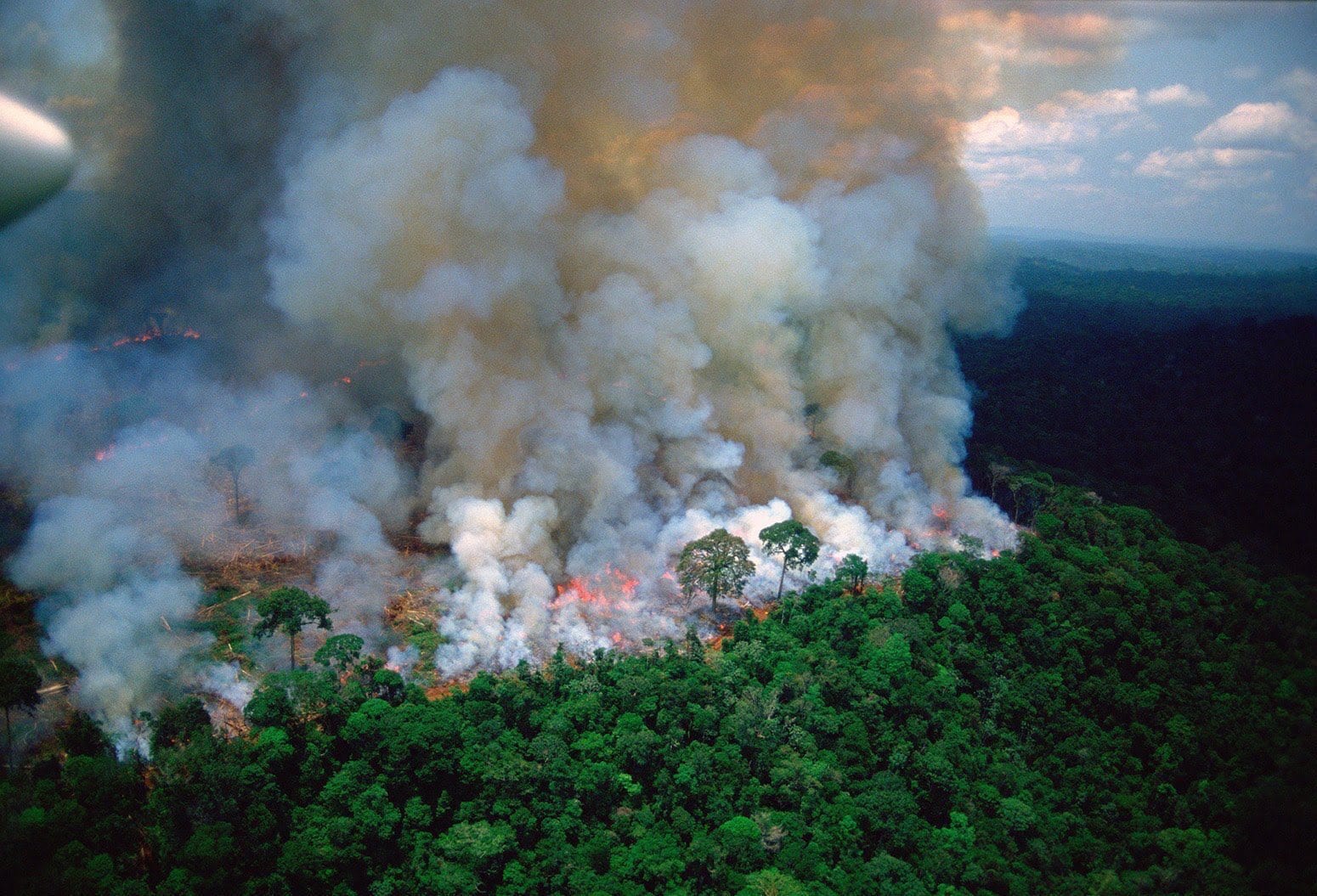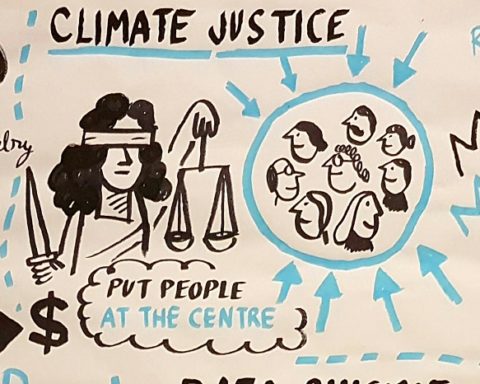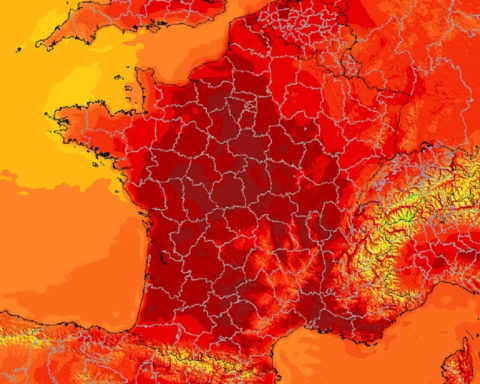Jakarta, capital of Indonesia. A megalopolis teeming with ten million people. The city could partially disappear, drowned in the rising waters. Already today, it is sinking 25 cm per year. and the northern half of the city is now at sea level or just underneath. What can I do? Build pharaonic dikes, pharaonic dikes, pharaonic dikes... survival facilities? The World Bank disagrees. It it is best to keep the population away from coastlines susceptible to submergence, and build somewhere else, further, higher. Jakarta's fate is not unique; 570 major cities around the world are affected. One billion people s may be required to leave their coastal habitat within 30 days. the next few years.
The oceans, which are the source of life on Earth, could become our worst enemies on a global scale. So says the next report AFP has just been awarded a special prize in the IPCC, which is due to be released in September. exclusivity. This 900-page document is the fourth special report by the United Nations published in less than a year. Precedents, equally alarming, included on the objective of limiting global warming to 1.5 °C, on the biodiversity and the management of land and the world food system. According to this fourth opus, which compiles the existing scientific data and is seen as a baseline, rising sea levels could eventually displace 280 million people in the world. This is under the optimistic assumption that the global warming would be limited to 2°C compared to the pre-industrial. With the foreseeable increase in the frequency of hurricanes, many megacities close to the coasts but also small nations flooding every year from 2050 onwards, even though the islanders would be flooded every year from 2050 onwards. in optimistic scenarios.
Already last spring a report of the World Bank was concerned about the rising waters of the oceans around the world. At the time, the international organization estimated that 170 million people would be forced to leave their homes and migrate, mostly within their own countries. The IPCC predicted that sea levels would rise faster than expected and affect many more people, with some experts even suggesting that up to 1 billion people would have to move from coastal areas. It is no longer a question today of whether some human communities might have to move. The question is when and, above all, where and how.
Chronicle of a disaster foretold
Rising sea levels look like the chronicle of a disaster foretold. The phenomenon appears to be inevitable, but measures are slow to be put in place to avoid chaos. This is the thrust of the World Bank report, which calls for withdrawal measures to be taken as soon as possible. For the Bank, there is no point in building dykes and embarking on excessive construction projects designed to protect us from the sea. It is a waste of time - and above all a waste of money. For the Bank". coastal protection from storms and sea-level rise would make economic sense for only about 22 to 32 % of the world's coastal areas in the 21st century ». The rest is money thrown into the sea. The international institution, like most scientists, recommends a gradual withdrawal. Rather than investing in costly seawall construction, it is smarter to launch affordable inland construction programmes. Millions of displaced people will have to be housed elsewhere.
The capital of Indonesia, Jakarta, is one of the cities in the world most affected by rising water levels. It is sinking by 25 centimetres a year and all of its densely populated northern neighbourhoods are on the surface, immediately threatened by submersion. So much so that Indonesian President Joko Wikodo has said he wants his country to change its capital. "I would like to ask (...) for your permission and support to move our capital to the island of Borneo," he said. A clearly stated withdrawal strategy but which does not prevent him from launching a vast programme of dyke construction at the same time.
No one is spared
The Jakarta case is not unique. Bangkok and its ten million inhabitants was built on swampy land 1.5 metres above of sea level. The sea level is rising by 2.5 centimetres per year and the phenomenon does not stops growing. Aggravating phenomenon, its immense skyscrapers are built on a floor that looks like a sponge and that is sinking more and more in more. A worst-case scenario taken very seriously by the World Bank, which estimates that that 40 % of the city could be flooded by 2030.
Why not enjoy unlimited reading of UP'? Subscribe from €1.90 per week.
READ UP : Bangkok sinks under the rising sea level
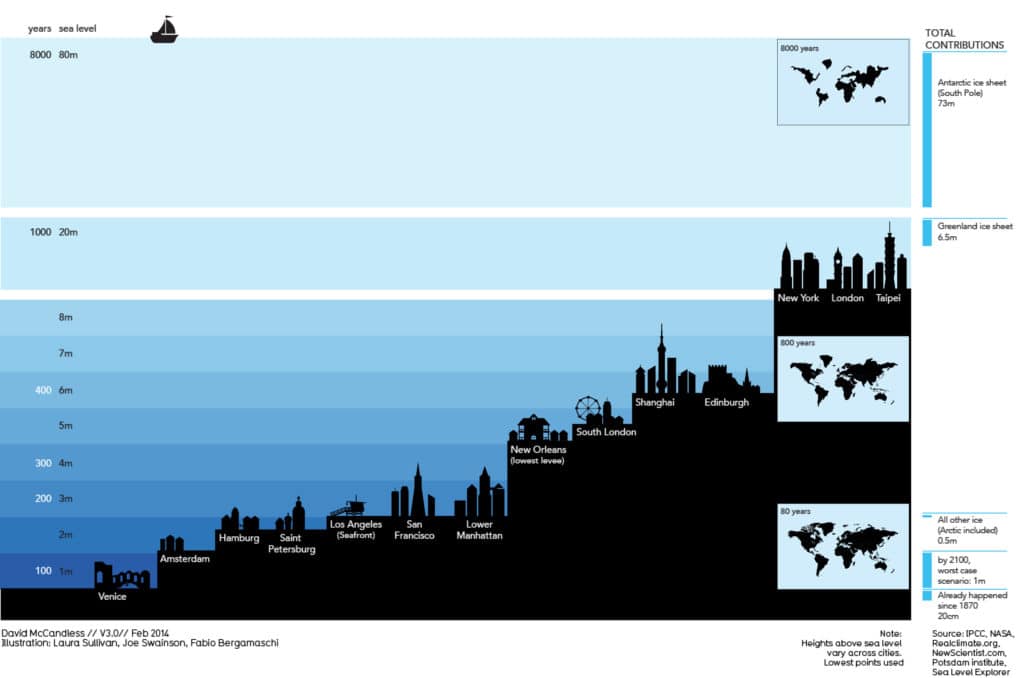
Asia is at the forefront of the rising waters. It is home to thirteen of the twenty cities that will be the most affected by the rising waters. phenomenon caused mainly by climatic disturbances. In Japan, Osaka, the second largest city in the archipelago, is expected to lose all its business districts. Bangladesh is caught between the waters coming from the melting ice of the Himalayas and the Indian Ocean. Located on the delta of all the risks, the country and its millions of inhabitants will suffer the full force of the effects of climate change. In Ho Chi Minh City, Vietnam, one third of the The city is already facing rising water levels with repeated floods.
America, even though its president claims that the global warming is just a fabrication, is directly concerned by the rising waters. New York, Miami and dozens of other cities will find their feet, if not more, in the water. In Florida, the emblem of American technological genius, Cape Canaveral, is going to pack up, pushed back by the waves of the ocean. In the west, Los Angeles and San Francisco are both threatened.
In Africa, many cities are preparing for the worst. In Egypt an increase of only fifty centimetres will flood the entire region... of Alexandria and its eight million inhabitants. On the Atlantic coast, Abidjan, both its port and airport are located barely one metre above the level from the sea. According to a UN report, 562 km2 of coastline could become to be found drowned in the near future. In Lagos, Nigeria, the city with the most densely populated Africa with fifteen million inhabitants, the sea is flooding already all the slums.
Europe is not spared. In the United Kingdom, vast tracts of farmland will disappear under the sea. The Netherlands, as its name suggests, is the most threatened. With a scenario of global temperatures rising between 2 and 4 degrees, half of the country and its inhabitants will be submerged. In France too, cities such as Bordeaux, Calais, Dunkirk, but also Saint-Malo and Rouen predict that a large part of their urban areas will be under water by the end of the century.
The century of great migrations
This bleak picture is in danger of becoming one of our daily realities. Faced with these extreme phenomena, the world will experience an increase in the movement of people. Waves of internal migration will inevitably arise, which should alert the authorities now. Until now, we have been confronted with internal migration caused by economic imperatives: population movements from the countryside to the cities have been steadily increasing in recent years. Today, however, this migration is proving to be a death trap. One of the authors of the World Bank report states that "[t]here is no doubt that migration from rural to urban areas is a deadly trap. Without proper planning and support, people migrating from rural to urban areas could face new and even more dangerous risks. ». Faced with these challenges, the urban and development plans of most of the world's States will have to be completely revised. They will have to take into account climate change in general and rising sea levels in particular and integrate into their strategies the dynamics and trajectories of future major climate migrations.
According to the latest IPCC report, sea level rises in the 22nd century "could exceed several centimetres per year," about a hundred times higher than today. If temperatures rise by 2°C in 2100, this will be the beginning of a "race to the top" in sea level rise, warns Ben Strauss, president and director of Climate Central, a research institute based in the United States.
The report will be released in time for a world climate summit in New York on 23 September convened by UN Secretary-General Antonio Guterres. He wants to obtain stronger commitments from countries to reduce their CO2 emissions which, at the current rate, would lead to global warming of 2 to 3°C by the end of the century.
Experts fear that China, the United States, the European Union and India - the four largest emitters of greenhouse gases - will come up with promises that do not match the stakes. On the other side of the Atlantic, Michael Mann, director of the Earth System Science Center at the University of Pennsylvania, points out, "[t]he United States is not going to be able to meet the challenges. techno-optimists still think we can find ways to solve this problem.« even though " the United States is not ready to deal with a one-metre rise in sea level by 2100 "for some of their cities like New York and Miami.
On a more individual level, each of us must now be led to integrate these risks into our personal life plans. The dream of the little house with its feet in the water seems so much like something from another century...
To fight against disinformation and to favour analyses that decipher the news, join the circle of UP' subscribers.


